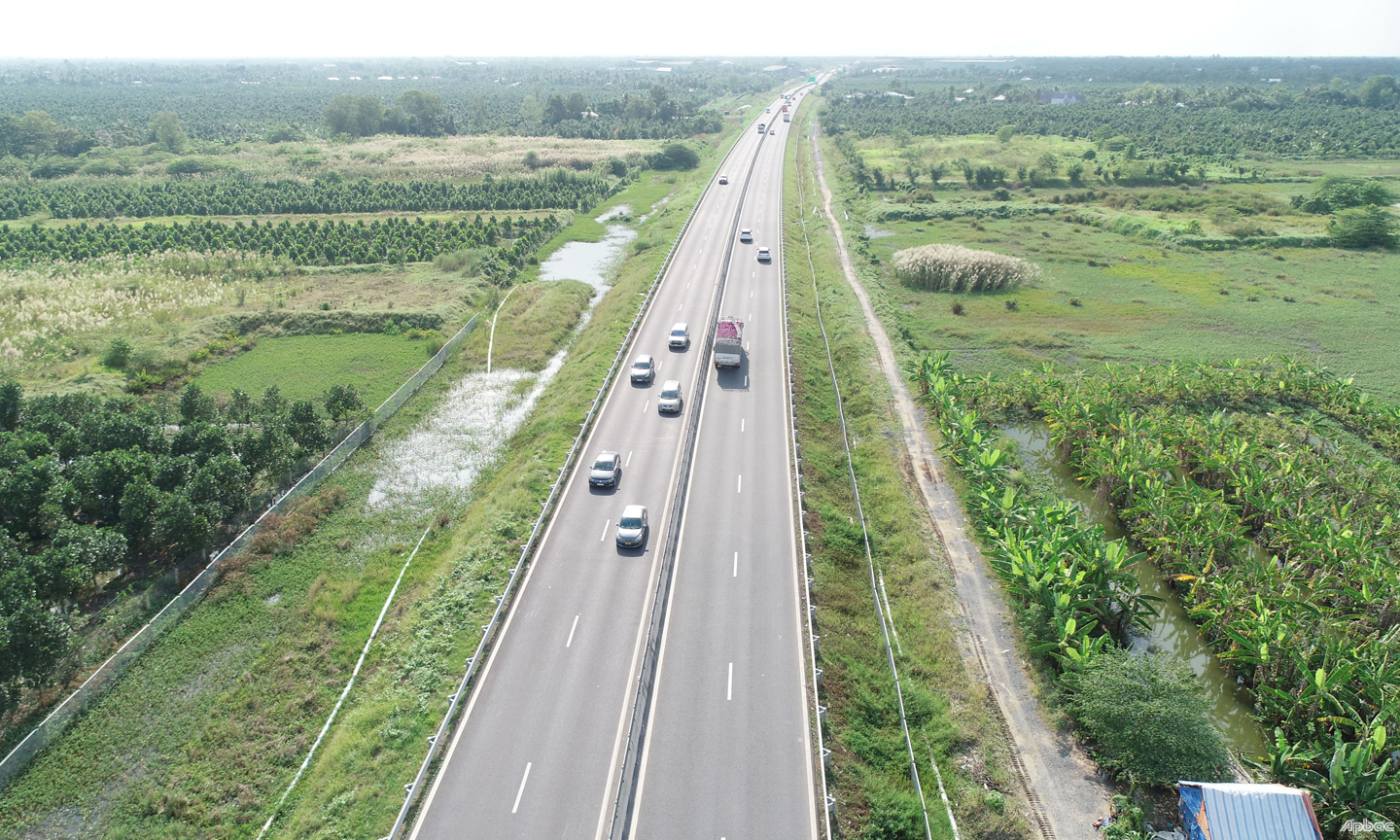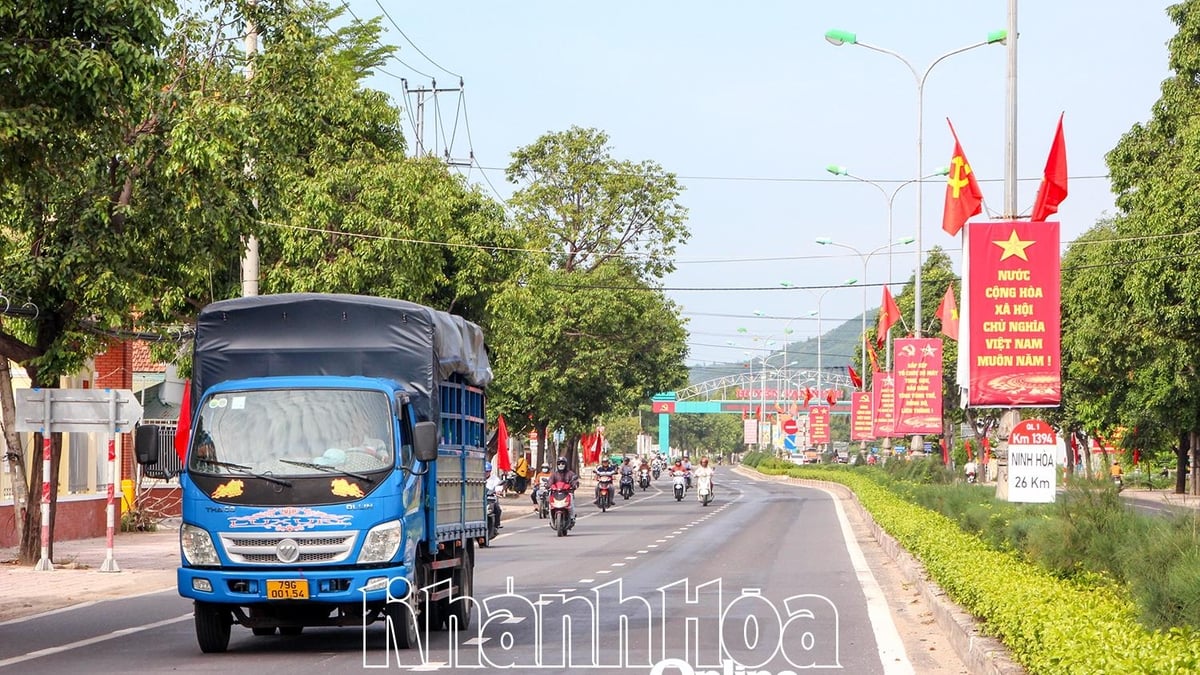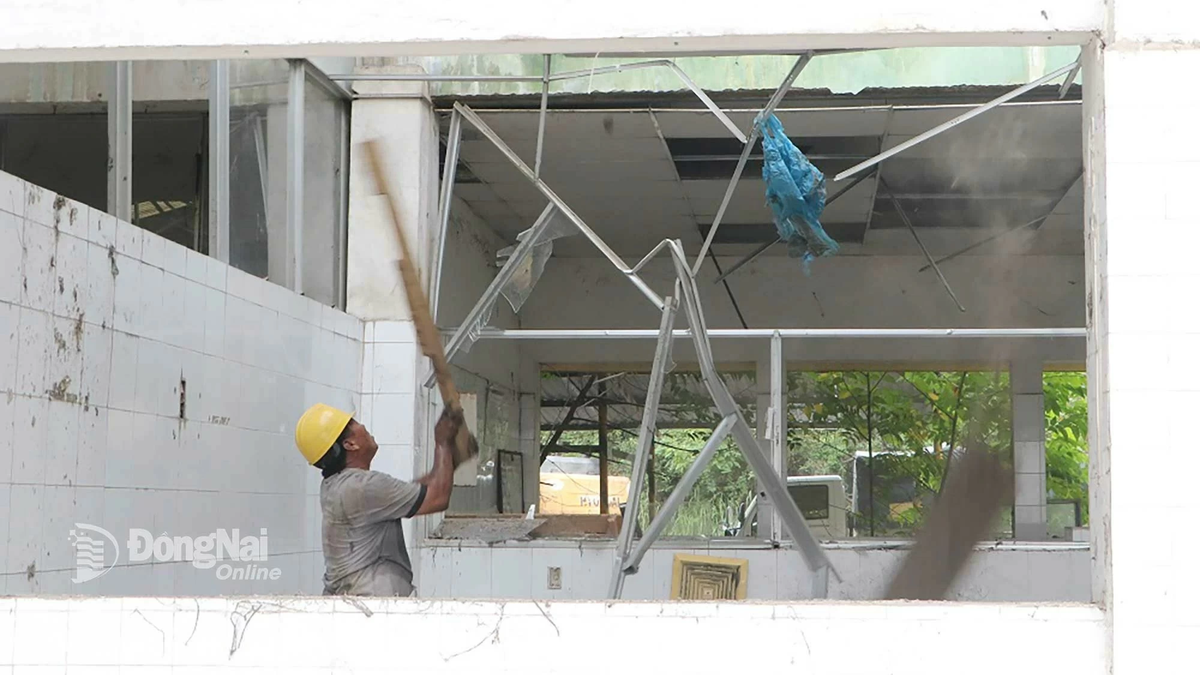According to new standards, highways must have at least 4 lanes, and the maximum speed allowed on highways must not exceed 120km/h.
The Ministry of Transport has just issued Circular No. 06/2024 on National Technical Regulation QCVN 115:2024/BGTVT for expressways. This Circular takes effect from October 1, 2024.
 |
Expressways have a minimum scale of 4 lanes (2 lanes for each direction) - Photo: Minh Thanh |
Minimum 4 lane highway
Accordingly, expressways have a minimum scale of 4 lanes (2 lanes for each direction), with emergency lanes arranged continuously (except for the following locations: across bridges with a span of 150m or more; bridges with pillars 50m or more high; tunnels; with acceleration and deceleration lanes; and auxiliary lanes for climbing slopes).
Works associated with expressways include: Route traffic management and operation center; rest stops; non-stop electronic toll collection system for toll routes; vehicle load inspection station; protective fences.
Regarding the design speed of expressways, the new standard stipulates: The design speed of expressways is divided into 3 levels as follows: Level 120 has a design speed of 120km/h; level 100 has a design speed of 100km/h; level 80 has a design speed of 80km/h; for locations with especially difficult terrain, controlled by national defense and security factors, a design speed of 60km/h is allowed.
On expressways, there may be sections applying different grades, but these sections must be at least 15km long and the design speed of two consecutive sections must not differ by more than 20km/h. In cases where expressways apply a design speed grade that is one grade higher (20km/h), there must be a transition section of at least 2km in length with an intermediate design speed grade.
Regarding the number of lanes, the new standard requires that the number of lanes is determined based on the design traffic volume, but not less than 2 lanes in each direction. The minimum lane width is 3.75m for grade 120 and 100 roads and a minimum of 3.50m for grade 80 roads.
For emergency stopping lanes, the minimum width is 3.00m for grade 120 and 100 roads and a minimum of 2.50m for grade 80 roads.
Regarding the median strip of the highway, the standard stipulates that a median strip (including a median strip and a safety strip on both sides of the median strip) must be arranged to separate the two directions of traffic in the case where the cross-section of the highway is arranged on the same roadbed. The minimum width of the safety strip is 0.75m for grade 120 and 100 roads and a minimum of 0.50m for grade 80 roads. The median strip is designed to ensure safety.
In case the two-way traffic is arranged on two separate roadbeds without a median strip, on the left side of the traffic direction, a safety strip and a dirt shoulder are arranged. The safety strip has a minimum width of 1m for grade 120 and 100 roads and a minimum width of 0.75m for grade 80 roads.
Maximum speed allowed does not exceed 120km/h
Regarding the management, operation, exploitation and maintenance of highway infrastructure, the new standards clearly state: The management, operation, exploitation and maintenance of highway works shall comply with the provisions of Decree No. 32/2014 dated April 22, 2014 of the Government on the management, exploitation and maintenance of highway works, amended and supplemented by Decree No. 25/2023 dated May 19, 2023 of the Government and guiding circulars.
Also in highway exploitation, the permitted operating speed on highways is determined based on the design speed of the route, the technical status of the highway, weather conditions, climate, traffic volume, and types of vehicles participating in traffic on the highway.
The maximum speed allowed on expressways shall not exceed 120km/h. The maximum speed allowed and the design speed shall not differ by more than 20km/h; the maximum speed allowed for two consecutive sections shall not differ by more than 20km/h.
Regarding transitional regulations, Circular 06/2024 of the Ministry of Transport stipulates: Expressway construction investment projects that have been decided on investment policies before the effective date of this Circular shall continue to be implemented in accordance with the regulations at the time of deciding on investment policies.
For expressways with a design speed of 80km/h or less that are in operation before the effective date of this Circular, when investing in upgrading or expanding, it is allowed to apply technical factors for projects that have been approved before the effective date of this Circular.
According to Chinhphu.vn
.
Source























































![[Maritime News] Container shipping faces overcapacity that will last until 2028](https://vphoto.vietnam.vn/thumb/402x226/vietnam/resource/IMAGE/2025/7/30/6d35cbc6b0f643fd97f8aa2e9bc87aea)













































Comment (0)